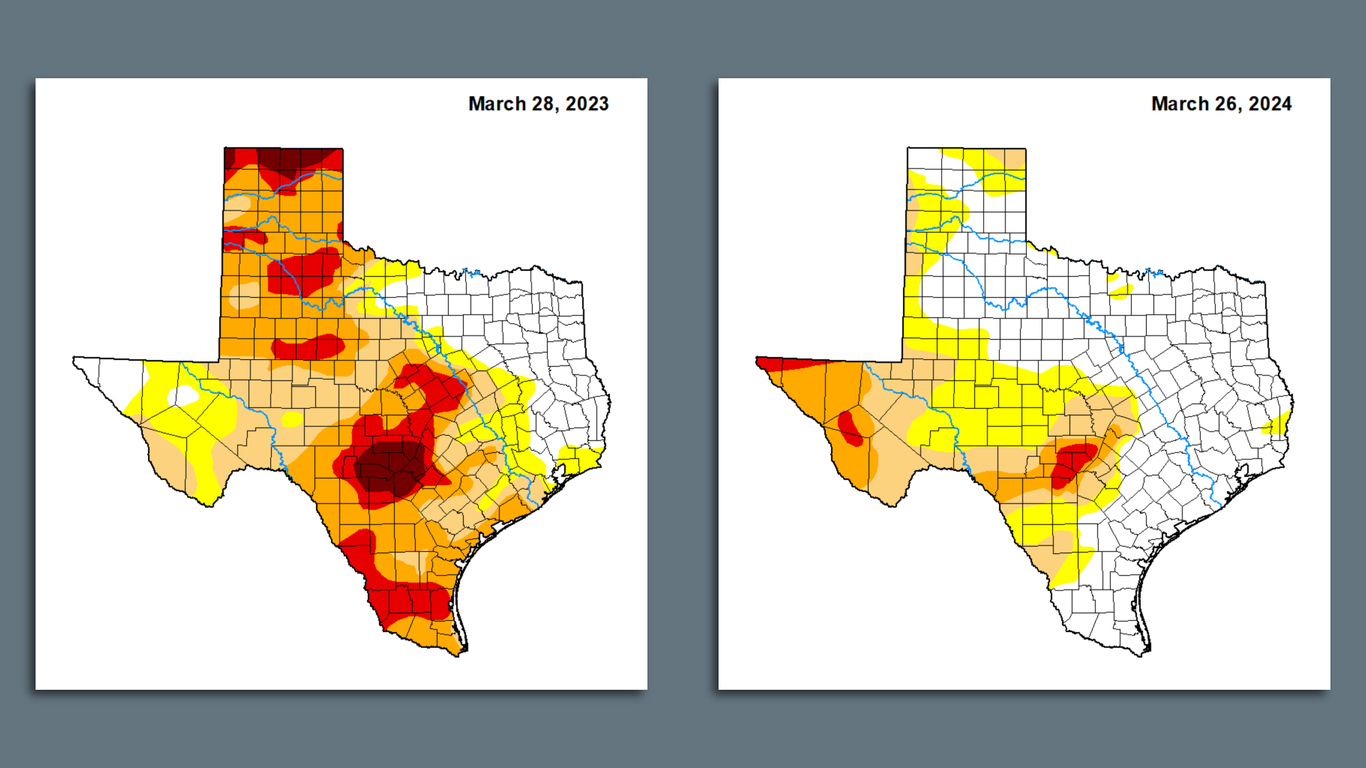Spring rains could help keep summer heat at bay
North Texas has seen above average rainfall this year. The recent rainfall in North Texas has helped the region avoid drought conditions so far this spring, according to data from the U.S. Drought Monitor. As of the latest data, a quarter of the state is experiencing drought conditions, with only 2% of it in extreme or exceptional drought. Central and West Texas are the state's current drought hotspots. However, too much rain can pose a threat, as DFW Airport's month-to-date rainfall was 5.7 inches, significantly higher than the normal monthly rainfall of 2.9 inches. The El Niño year likely accounts for this difference, with more rain events expected during these conditions.

Опубликовано : 4 недели назад от Naheed Rajwani-Dharsi в Weather
The recent rainfall in North Texas has helped the region steer clear of drought conditions so far this spring, new data from the U.S. Drought Monitor shows. Why it matters: Firefighters and weather forecasters keep a close eye on rain totals and drought risks heading into the summer, when the brutal heat typically worsens conditions.
State of play: Around this time last year, almost 67% of Texas was in drought. Roughly 17% of the state was in extreme or exceptional drought.
• As of the latest data released Thursday, a quarter of the state is experiencing drought conditions including just 2% of the state in extreme or exceptional drought.
• Yes but: Too much rain can pose a threat, too.
The big picture: Central and West Texas are the state's current drought hotspots, per the U.S. Drought Monitor.
• The drought map bodes well for North Texas, potentially giving the region some reprieve heading into the hotter months.
By the numbers: DFW Airport's month-to-date rainfall as of Wednesday was 5.7 inches, significantly higher than the normal month-to-date rainfall of 2.9 inches, per the National Weather Service in Fort Worth.
• The airport has seen 10.8 inches of rain this year, more than 2 inches ahead of average.
• The El Niño year likely accounts for the difference — more rain events are expected during the conditions, NWS meteorologist Steve Fano tells Axios.
What's next: Normal rainfall is forecast for April, May and June, per the weather service.
The bottom line: "Heading into the summer, we'll pretty much take all the rain we can get," Fano says.
• "The rainier you are, the greener the vegetation is. As you head into the hotter parts of the year, that helps keep the temperatures from getting exceptionally hot."
